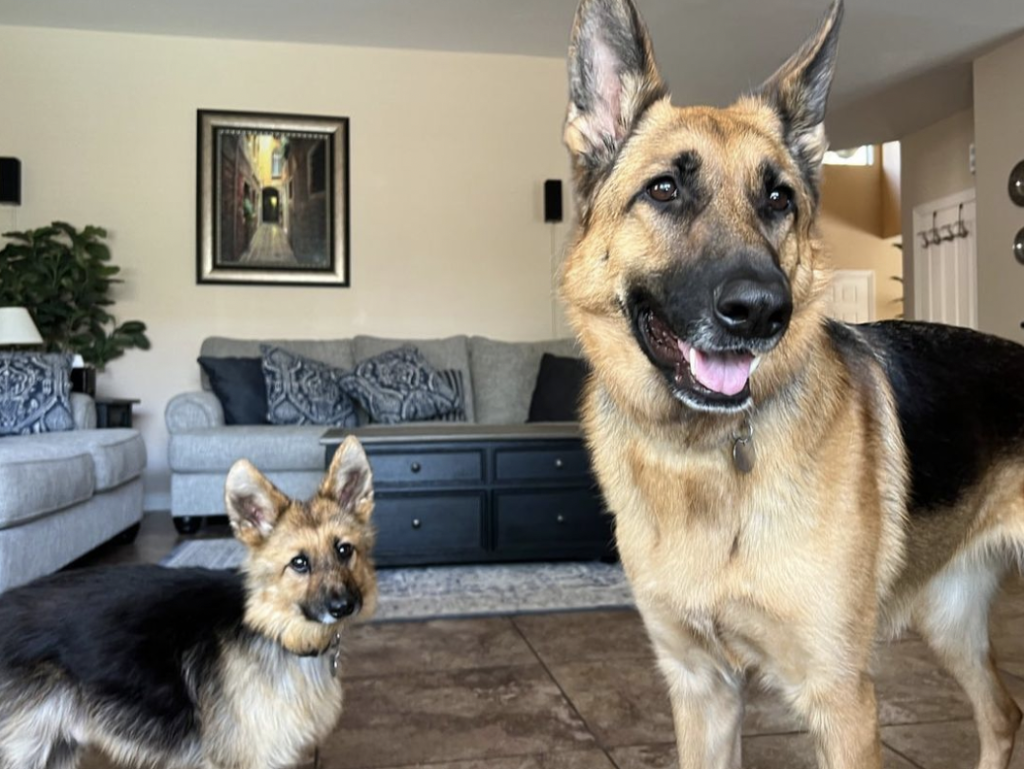Discover the joys and challenges of raising a baby German Shepherd with dwarfism. Learn about this rare condition, get expert tips, and follow our personal story.
Our Unexpected Introduction to Canine Dwarfism
The day my husband and I brought home our 8-week-old German Shepherd puppy, Bella, was one of the happiest moments of our lives. As experienced GSD owners, we thought we knew what to expect—a clumsy, energetic ball of fur that would quickly grow into a majestic, loyal companion. However, as the weeks went by, we noticed Bella wasn't keeping up with the typical growth milestones for her breed.
At first, we chalked it up to her being the runt of the litter. But by the time she was 4 months old, it was clear something else was going on. Bella's legs remained short and bowed, her head seemed unusually large for her body, and her fluffy puppy coat showed no signs of shedding. After extensive testing, our veterinarian confirmed the diagnosis: Bella had pituitary dwarfism, a rare condition most commonly seen in German Shepherds.
Understanding Dwarfism in Dogs
Dwarfism in dogs, also known as canine hypopituitarism or pituitary dwarfism, is a genetic disorder caused by a deficiency of growth hormones. This can be due to a malformed or absent pituitary gland. Pituitary dwarfism is an autosomal recessive disorder, meaning a puppy must inherit the mutated gene from both parents to be affected.
While dwarfism can occur in any breed, it is most prevalent in German Shepherds, with an estimated 20% of the breed carrying the recessive gene. Other breeds prone to dwarfism include Corgis, Dachshunds, Basset Hounds, and Tibetan Spaniels, though in these breeds it is often a desired trait rather than a genetic anomaly.
It's important to note that pituitary dwarfism is different from achondroplasia, another type of dwarfism characterized by shortened legs. Dogs with pituitary dwarfism have proportionally small bodies, whereas those with achondroplasia have abnormally short limbs relative to their body size.

Recognizing the Signs of Dwarfism
Puppies with dwarfism may appear normal at birth but usually start showing signs between 2-4 months of age. Some common indicators include:
- Slow growth rate compared to littermates
- Retention of puppy coat and lack of adult fur
- Enlarged head relative to body size
- Short, bowed legs (in cases of achondroplasia)
- Skin and coat changes like hair loss, thinning, or hyperpigmentation
- High-pitched bark or "puppy" voice
- Delayed dental eruption or abnormal tooth development
If you suspect your German Shepherd puppy may have dwarfism, consult with your veterinarian. They can run tests to measure growth hormone levels and assess skeletal development through X-rays.
Health Challenges Faced by Dwarf German Shepherds
Beyond their small stature, German Shepherds with dwarfism often face numerous health issues stemming from their condition. Some potential complications include:
-
Skin problems: Many dwarf dogs suffer from skin infections, hair loss, and thickened or darkened skin due to hormonal imbalances.
-
Hypothyroidism: Lack of thyroid hormones can lead to lethargy, weight gain, and cold intolerance.
-
Dental abnormalities: Delayed or abnormal tooth development is common, which may require specialized dental care.
-
Orthopedic issues: While not as pronounced as in achondroplasia, joint disorders and abnormal bone development can still occur.
-
Reproductive difficulties: Hormonal imbalances often lead to infertility or reduced fertility in affected dogs.
Regular check-ups with a veterinarian familiar with dwarfism are crucial to catch and manage these health concerns early on. Many issues can be mitigated through hormone replacement therapy, medicated shampoos, dental cleanings, and weight management.
Caring for a Dwarf German Shepherd
Despite the challenges, caring for a German Shepherd with dwarfism is incredibly rewarding. Bella has brought immense joy to our lives with her playful spirit and loving nature. Here are some tips we've learned along the way:
-
Find a knowledgeable veterinarian: Work with a vet who has experience with dwarfism to ensure your dog gets appropriate care.
-
Keep up with grooming: Regular brushing and bathing with medicated shampoos can help manage skin and coat issues.
-
Monitor weight and diet: Dwarf dogs are prone to obesity, so feed a balanced diet and avoid overfeeding.
-
Provide mental stimulation: Puzzle toys and training sessions keep their minds active and engaged.
-
Use positive reinforcement: Like any dog, dwarf German Shepherds respond best to reward-based training methods.
-
Be patient and adaptable: Your dwarf dog may need more time to learn commands or maneuver obstacles. Adjust your expectations and celebrate their unique abilities.
Supporting Dwarfism Research and Rescue
As we've navigated life with a dwarf German Shepherd, we've become passionate about supporting organizations dedicated to researching and rescuing dogs with this condition. The Dwarf German Shepherd Rescue is a fantastic non-profit that provides education, placement, and lifelong support for dwarf German Shepherds in need.
We've also been following the work of Dr. Hannes Lohi and his team at the University of Helsinki, who have been studying the genetic basis of pituitary dwarfism in German Shepherds. Their research aims to develop genetic tests to help breeders identify carriers and make informed breeding decisions to reduce the incidence of this disorder.
Conclusion: Embracing the Unique Journey
Raising a baby German Shepherd with dwarfism has been an eye-opening experience filled with laughter, love, and life lessons. Bella may not fit the standard image of a German Shepherd, but she embodies all the best traits of the breed—intelligence, loyalty, and a zest for life.
To anyone considering adopting a dwarf German Shepherd, know that it will be a unique journey with its share of challenges and triumphs. But if you're ready to open your heart to a special needs dog, the unconditional love and joy they bring is immeasurable. Bella has taught us to embrace life's unexpected detours and cherish the beauty in being different. And for that, we are forever grateful.
